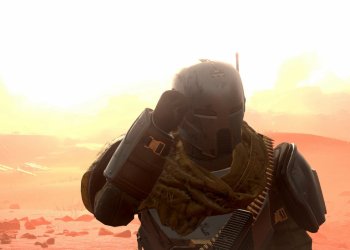The much-anticipated Hyrule Warriors: Age of Imprisonment is on the horizon, and it’s stirring excitement among fans of both Zelda and the musou genre. Set before the events of Tears of the Kingdom, this installment is poised to deliver a riveting narrative alongside its signature fast-paced, fantasy-driven combat.
In keeping with previous Hyrule Warriors games, Age of Imprisonment will feature a band of characters battling their way through grand, large-scale skirmishes. As the title implies, the game draws heavy inspiration from Dynasty Warriors and its spinoffs, adopting the chaotic gameplay style inherent to those titles. This approach distinguishes it from recent Zelda games, yet its direct connection to the BOTW/TOTK series, including its art style and storyline, ensures it carries some of their hallmarks. Depending on how deeply these elements are integrated, Age of Imprisonment could offer a uniquely experimental experience.
There’s a noticeable trend developing in the Zelda series, signaled by Hyrule Warriors: Age of Imprisonment’s upcoming release. As it serves as a canonical prequel, missing characters might hint at significant shifts in the series’ future direction.
The potential inclusion of abilities like Fuse and Ultrahand in Age of Imprisonment is particularly intriguing. The precedent was set with Hyrule Warriors: Age of Calamity, where powers from Breath of the Wild, such as Cryonis, Remote Bomb, Stasis, and Magnesis, were effectively adapted for combat. Each ability took on a more aggressive role, enhancing the game’s musou combat while staying true to its source material’s narrative.
As Age of Imprisonment predates Tears of the Kingdom, it’s entirely plausible that players could harness powers like Fuse, Recall, and Ultrahand, especially when playing as Rauru, who originally provided these abilities. The possibility is there, even if some skills, like Ascend, might not make the cut due to their niche application.
Reimagining these abilities for a musou setting offers a creative challenge and opportunity. For instance, Ultrahand might allow players to quickly assemble battlefield fortifications or war devices, while Recall could strategically rewind enemy movements. Fuse might enhance weapon customization before the fray. By leveraging such features, Age of Imprisonment could elegantly integrate treasured mechanics from Tears of the Kingdom, creating a seamless blend of familiarity and innovation.








![[Title Rewrite] [Winners Announced for Free Game Giveaway] Sorry We’re Closed (Switch + PS5)](https://www.gameria.net/wp-content/uploads/2025/04/Title-Rewrite-Winners-Announced-for-Free-Game-Giveaway-Sorry-Were-360x180.jpg)
































